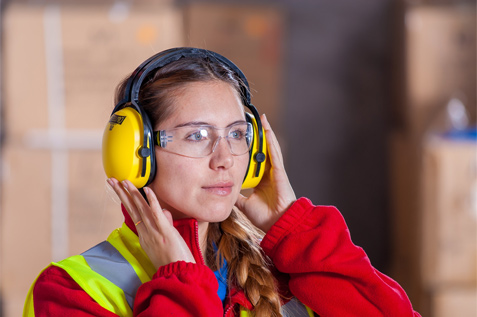Without proper protection systems in place, working in cold conditions could turn fatal.
Workers in the construction, fishing and agriculture industries are the worst hit when temperatures nosedive.
Prolonged exposure to extremely cold temperatures can often result in dire health issues such as frostbite, hypothermia and trench foot.
However, with proper protection measures in place, workers can carry out their duties regardless of dropping temperatures.
Here are some practical ways to protect your employees from adverse effects of working in a cold environment.
Let’s take a closer look at these guidelines.
Safe Work Practices
1. Increase awareness of cold-induced illnesses and injuries. For instance, your employees should be able to identify signs and symptoms of hypothermia, frostbite and trench foot. And it would be extremely advantageous if they have basic knowledge of First Aid.
2. Allow frequent and short breaks to prevent prolonged sitting or standing, which often leads to exhaustion and fatigue.
3. Implement a ‘buddy system’ for those working outdoors. They can look after each other and in case of an emergency, the ‘buddy’ can quickly call for help.
4. Plan the work schedule and breaks carefully. Schedule work at the warmest time of the day. Also, ensure that work is properly paced to avoid excessive sweating as this can result in damp clothing, thus lowering the body’s metabolic heat.
5. Give new employees time to adjust to the cold environment before giving them a full workload. Remember to give them proper protective clothing.
6. Assign or schedule workers with poor physical condition on warmer days. Another option would be to let them work in areas that are more enclosed or less exposed.
7. Provide them with sufficient fluids, more so when they are doing strenuous work. Hot beverages or soups are best for warming up the body.
8. Advise workers to avoid drinking too much coffee. Caffeinated drinks increase urine production that eventually contributes to dehydration. Coffee also increases blood flow on the skin surface, resulting in lower body heat.
9. Prohibit alcohol use before or during a worker’s shift. Alcoholic drinks impair the body’s ability to regulate temperature thus increasing the risk of hypothermia.
10. Outline first aid and medical care procedures. Assign one trained person for each shift in case of an emergency.
11. Provide balanced meals. They are essential for maintaining body heat and preventing dehydration.
[b3_row]
[b3_column lg=”4″ md=”12″ sm=”12″ xs=”12″ ]
First Aid Training
Up to date and information packed First Aid Training. Trained by industry experts.
Discover more…
[/b3_column]
[b3_column lg=”4″ md=”12″ sm=”12″ xs=”12″ ]
Emergency Response Training
Make sure your workplace has people who know what to do in emergency situations.
Check the training options…
[/b3_column]
[b3_column lg=”4″ md=”12″ sm=”12″ xs=”12″ ]
First Aid Kits
Regularly stocked First Aid Kits. Different kinds. Always up to date with the rules and regulations.
Learn more…
[/b3_column]
[/b3_row]
Personal Protective Clothing
12. Make sure workers are aware of the importance of proper safety clothing, safe work practices, physical fitness requirements, and emergency procedures in case of cold induced injuries.
13. Educate workers about the protective clothing to wear in harsh weather conditions. Wool and synthetic fibres are better than cotton which tends to get damp and lose its insulating properties. Advise them to dress in layers.
a. Starting with the outer layer to act as a windbreaker and allow ventilation
b. A middle layer to absorb sweat and retain insulation in a damp environment
c. And an inner layer of cotton to allow ventilation
14. Provide separate protection for the eyes, nose and mouth.

Workplace Equipment
15. Recognise the environmental and workplace conditions that may pose health and safety risks for workers.

16. Provide personal heaters, shielding or heated enclosures. Ensure that workers can warm up in heated rooms or shelters like tents, cabins, or restrooms.
17. Find ways to shield working areas against windy conditions.
18. Carefully consider proper equipment design. Make sure that metal handles and bars are covered in thermal insulating material. Tools should be designed so they can be used without having to remove mittens or gloves.
19. Provide the proper selection of tools, equipment, and machinery that can withstand extreme temperatures. That way, workers can perform their jobs faster and more efficiently.
20. Make sure that the airspeed in refrigerated rooms does not exceed 1 meter per second. Monitor and record the temperature changes in the workplace with a thermometer at least every 4 hours.
Free Poster on How to Protect Workers in a Cold Environment
Protecting your workers from harsh, cold working conditions is simple.
Use this free poster as a guide and feel free to share it around as well.
Photo courtesy of Pexels Images by Pixabay
Photo courtesy of Flickr Images by NAVFAC
Photo courtesy of Pexels Images by Jarosław Miś


